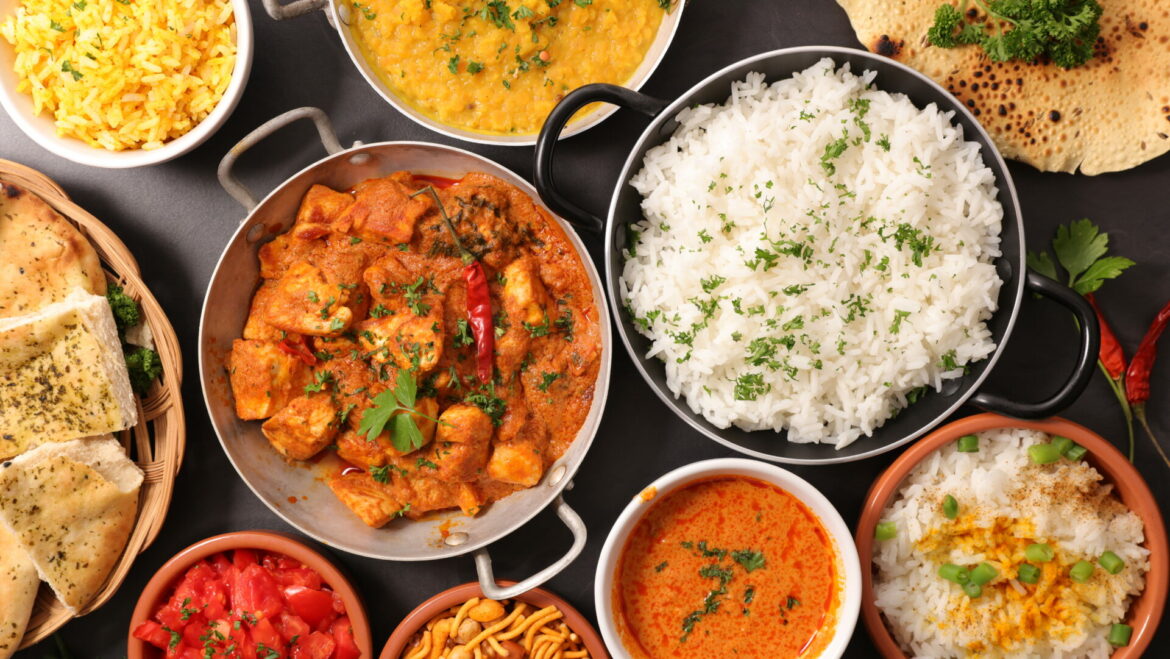Asia is a vast continent, rich in culture, history, and culinary diversity. From the fiery dishes of Sichuan peppers to the subtle notes of Japanese umami, each region brings its own unique flavors to the table. This article delves into the vibrant and varied cuisines of Asia, highlighting key ingredients, popular dishes, and the cultural significance that makes Asian food so captivating.
The Aromatic World of Indian Cuisine
Indian cuisine is a kaleidoscope of flavors, characterized by its use of aromatic spices and herbs. Spices like turmeric, cumin, and coriander form the backbone of many dishes, imparting both fragrance and depth.
Key Dishes to Try:
-
- Biryani: A fragrant rice dish layered with marinated meat and seasoned with saffron.
-
- Masala Dosa: A savory crepe filled with spiced potatoes, served with chutneys.
Indian food goes beyond flavor; it is deeply rooted in traditions, often signifying religious practices and celebrations.
The Bold Flavors of Thai Cuisine
Thai cuisine is famous for balancing flavors—spicy, sweet, salty, and sour coexist harmoniously in dishes that tantalize the taste buds. Fresh ingredients like lemongrass, lime, and fish sauce are hallmarks of this flavorful cuisine.
Must-Try Thai Dishes:
-
- Pad Thai: Stir-fried rice noodles tossed with shrimp, peanuts, and bean sprouts.
-
- Tom Yum Goong: A spicy and sour soup with shrimp and a fragrant broth.
The art of Thai cooking lies in its emphasis on fresh, high-quality ingredients, making each meal a vibrant experience.
The Subtle Elegance of Japanese Cuisine
Japanese cuisine is known for its simplicity and aesthetic presentation, with seasonal ingredients playing a central role. Techniques like sushi making and delicate tempura frying showcase the precision and care involved in Japanese cooking.
Signature Japanese Dishes:
-
- Sushi: Vinegared rice combined with a variety of fish, vegetables, and sometimes tropical fruits.
-
- Ramen: Noodle soup with a rich and flavorful broth, often garnished with toppings like pork, eggs, and green onions.
Japanese meals often emphasize umami, the fifth taste, which adds depth and richness to the dishes.
The Heartiness of Chinese Cuisine
Chinese cuisine is incredibly diverse, with regional differences that reflect the land’s geography, climate, and culture. From the spicy dishes of Sichuan to the delicate flavors of Cantonese cooking, there’s something for everyone.
Popular Chinese Dishes Include:
-
- Peking Duck: A dish with crispy skin and tender meat, traditionally served with pancakes and hoisin sauce.
-
- Dumplings: Versatile and beloved, filled with meat, seafood, or vegetables, and steamed or fried.
Each region of China offers unique flavors and cooking methods, making the cuisine a true representation of its people.
The Unique Characteristics of Vietnamese Cuisine
Vietnamese cuisine is celebrated for its fresh ingredients and balance of flavors, often highlighted by the use of herbs and vegetables. Rice and noodles serve as staples, complemented by a variety of meats and seafood.
Essential Vietnamese Dishes:
-
- Pho: A fragrant noodle soup with beef or chicken, infused with spices and fresh herbs.
-
- Banh Mi: A flavorful sandwich layered with meat, pickled vegetables, and fresh cilantro.
The philosophy of “balance” in Vietnamese cooking mirrors the country’s cultural emphasis on harmony.
Conclusion: A Culinary Adventure Awaits
Exploring the cuisines of Asia is not just about tasting new foods; it’s about experiencing rich histories and diverse cultures. Each dish tells a story, with ingredients and flavors that reflect the heart and soul of its origins. Whether you’re drawn to the spicy aromas of Indian curry or the delicate elegance of Japanese sushi, Asia’s culinary landscape offers a spice of life that promises to be an unforgettable journey.

